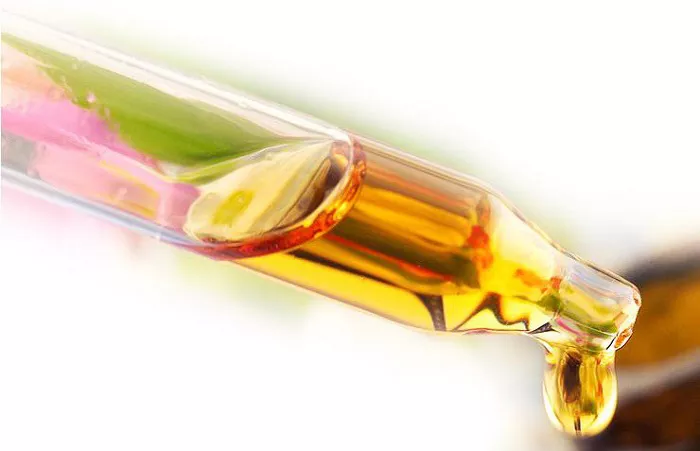Hair transplantation is a delicate surgical procedure that requires meticulous aftercare to ensure optimal results. One of the most common post-operative concerns is the appropriate use of hair oils, as improper application can hinder graft survival and scalp healing. This guide explores the ideal timing, types of oils, and best practices for applying oil after a hair transplant, ensuring healthy hair growth and scalp recovery.
Why Post-Transplant Hair Care Matters
The success of a hair transplant depends not only on the surgical technique but also on post-operative care. The newly implanted grafts are fragile and require a conducive environment to thrive. Applying oil too soon or using the wrong type can clog pores, cause infections, or dislodge grafts. Conversely, proper oil application can moisturize the scalp, reduce scabbing, and promote healing.
Key considerations include:
- Graft Stability – New grafts take time to anchor securely; premature oil application may loosen them.
- Scalp Sensitivity – The scalp is highly sensitive post-surgery, requiring gentle products.
- Healing Phases – Different stages of recovery demand varying levels of moisture and protection.
When to Start Applying Oil After a Hair Transplant
Timing is crucial when reintroducing oils into your hair care routine. Most surgeons recommend waiting at least 7–10 days before applying any oil to the transplanted area. Here’s a breakdown of the ideal timeline:
First 48 Hours
- The grafts are most vulnerable immediately after surgery.
- Any contact with oils, water, or chemicals can disrupt the healing process.
- Follow the surgeon’s instructions regarding washing and moisturizing.
Days 3–7
- Light washing with a prescribed saline or mild shampoo is allowed.
- Avoid oils, as they may interfere with scab formation and graft adherence.
Days 7–14
- Once the grafts are secure, a light, natural oil (e.g., coconut or argan oil) can be applied sparingly.
- Focus on the non-transplanted areas if the scalp is still tender.
Beyond Two Weeks
- By this stage, most grafts are firmly anchored.
- Regular oiling can now help soften scabs and hydrate the scalp.
Best Oils to Use After a Hair Transplant
Not all oils are suitable for post-transplant care. The ideal oils should be:
- Non-comedogenic – Won’t clog pores.
- Anti-inflammatory – Helps reduce redness and irritation.
- Rich in nutrients – Supports hair follicle health.
Recommended Oils
- Coconut Oil – Antibacterial and deeply moisturizing.
- Argan Oil – Lightweight and rich in vitamin E.
- Jojoba Oil – Mimics natural sebum, promoting balance.
- Almond Oil – Soothes the scalp and reduces dryness.
Oils to Avoid
- Heavy oils like castor oil (can clog pores).
- Essential oils (too potent unless diluted).
How to Apply Oil Safely Post-Transplant
Proper application ensures maximum benefits without harming the grafts. Follow these steps:
- Patch Test First – Apply a small amount to a non-transplanted area to check for irritation.
- Use Fingertips, Not Nails – Gently massage in circular motions to avoid scratching.
- Avoid Over-Application – A few drops are sufficient; excess oil can attract dirt.
- Leave On for Limited Time – 30 minutes to an hour before rinsing with a mild shampoo.
Common Mistakes to Avoid
Even with the best intentions, patients often make errors in post-transplant oil application:
- Applying Too Soon – Risks graft dislodgement.
- Using Heavy Oils – Leads to clogged follicles and pimples.
- Rubbing Aggressively – Can cause trauma to healing tissues.
- Neglecting to Wash Off – Residual oil buildup can cause infections.
Additional Post-Transplant Hair Care Tips
Beyond oiling, these practices enhance recovery:
- Stay Hydrated – Supports overall scalp health.
- Avoid Sun Exposure – UV rays can damage sensitive grafts.
- Follow a Nutrient-Rich Diet – Vitamins A, C, and E promote healing.
- Sleep at an Incline – Reduces swelling in the first few days.
Long-Term Hair Oil Benefits After Full Recovery
Once the scalp has fully healed (typically after 4–6 weeks), regular oiling can significantly enhance hair growth and overall hair health. At this stage, the follicles are stable, and the scalp can tolerate deeper nourishment.
The benefits of continuing to use essential oils
- Strengthens Hair Shafts – Oils like coconut and argan penetrate the hair cuticle, reducing breakage and split ends.
- Prevents Dryness and Flaking – A well-moisturized scalp minimizes dandruff and irritation.
- Stimulates Blood Circulation – Gentle massaging during oil application boosts blood flow, encouraging thicker hair growth.
- Protects Against Environmental Damage – Oils form a protective barrier against pollution and UV damage.
Advanced Oil Blends for Optimal Growth
After complete recovery, considercustom oil blendsfor enhanced results:
- Castor + Coconut Oil Mix – Promotes thickness (use sparingly to avoid heaviness).
- Rosemary + Jojoba Oil – Stimulates follicles and reduces thinning.
- Lavender + Almond Oil – Calms the scalp and adds shine.
For best results, apply 2–3 times weekly, leaving it on for 1–2 hours before washing. Always use lukewarm water and sulfate-free shampoo to maintain moisture balance.
By integrating these practices into your long-term hair care routine, you can maximize the results of your transplant and maintain healthy, resilient hair. Would you like a tailored oiling schedule based on your hair type? Let’s optimize your regimen!
Conclusion
Applying oil after a hair transplant requires careful timing and selection of the right products. Waiting at least 7–10 days, using lightweight and nourishing oils, and following proper application techniques are key to ensuring graft survival and scalp health. Always consult your surgeon before introducing new products into your post-operative routine. By adhering to these guidelines, you can enhance healing, reduce complications, and achieve the best possible results from your hair transplant.Would you like personalized recommendations based on your hair type? Let’s discuss further!
Related Topics

